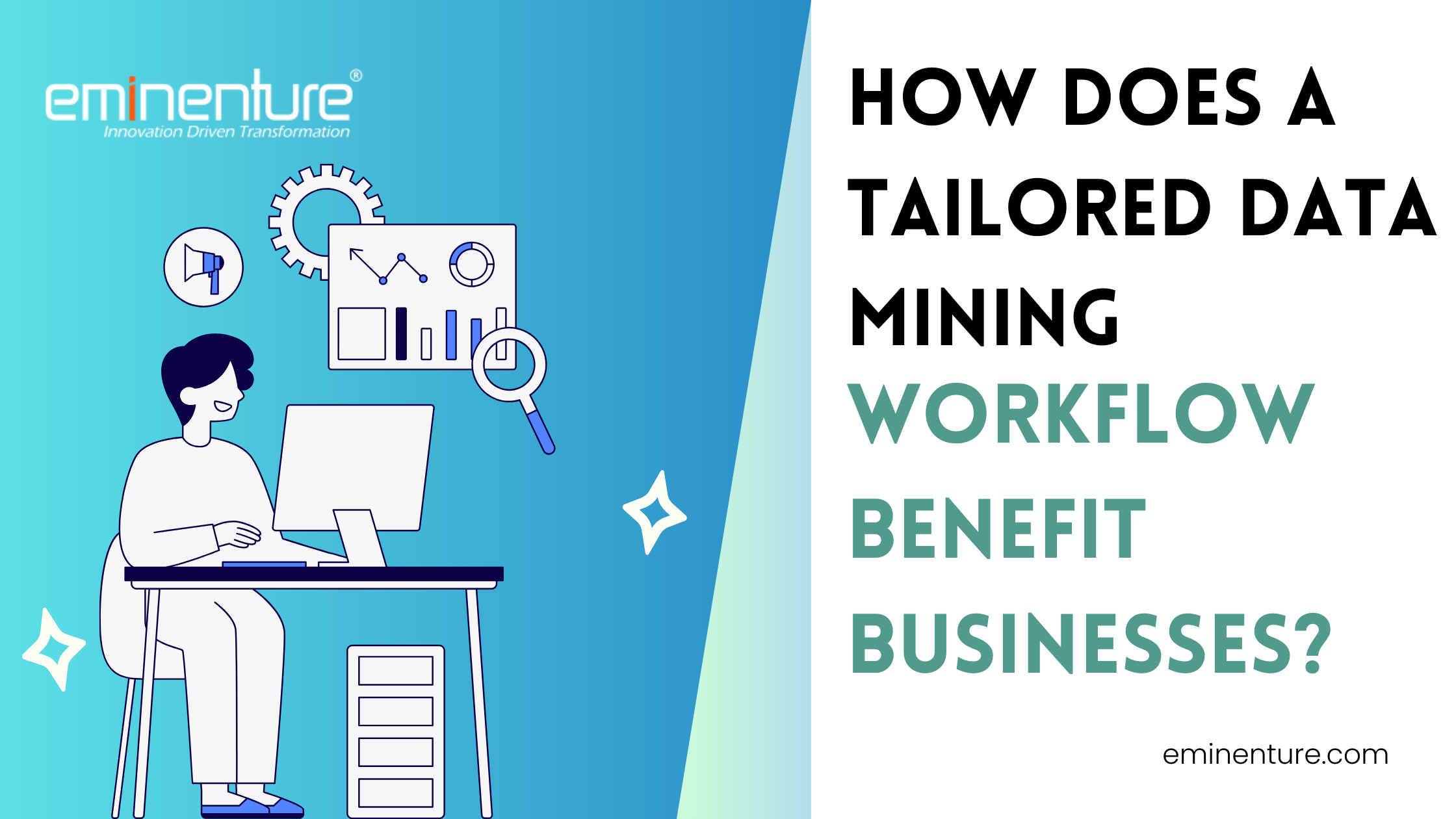How Does A Tailored Data Mining Workflow Benefit Businesses?

Strong 8k brings an ultra-HD IPTV experience to your living room and your pocket.
With data-driven models, preparing plans or strategies that really prove effective in real time is possible. In today's interconnected world, devices such as smartphones, computers, iPads, point-of-sale (POS) systems, and others connect us all. This connectivity produces data, which has insights. This insight can prove phenomenal in improving sales, purchases, competition, and more. Their effectiveness can be observed in the maximised efficiency, precision, and strategic value that a business draws using that insight.
Significance of Bespoke Data Mining Workflow
Did you know Statista found that the worth of the global big data market was $271 billion in 2023? This overwhelming figure reveals how critical data-driven insights are for businesses. They guide on how to define and utilise data workflows to maximise opportunities. This is why customised data mining workflow is crucial. This workflow certainly encompasses some standard steps. These steps start from preparing data, pass through collection, cleansing, data transformation, analysis, and finally visualisation. The end result guides businesses about how to optimise backend operations and their resources.
Benefits of Leveraging Custom Data Mining
1. Make Better Decisions
The data mining workflow is typically customised to meet organisational goals, which are typically specific. The goal of drilling insights is to find tailored business solutions, which must be actionable. So, data scientists focus on precise, clean, and niche data collection for intelligence. Let’s say the goal is to predict inventory demand. For it, the focus will be on collecting data that resonates with the purchasing patterns of customers.
This practice makes companies 23 times more likely to onboard customers and 6 times more likely to retain them, according to a McKinsey report.
2. Increased Efficiency
Bespoke workflow of mining data ensures streamlining the end-to-end data processing method. It, for sure, involves data hygiene steps like data entry, conversion using the optical character recognition method, de-duplication, standardisation, normalisation, enrichment, and validation. The reason behind customising this procedure is to collect the most relevant data sources and employ logical algorithms accordingly without unnecessary hassles.
Let’s understand it with a case. A manufacturing company, for example, uses a tailored mining workflow. It emphasises the data representing the efficiency of equipment. The insights will let you foresee the need for maintenance so that downtime can be minimized.
3. Cost Optimisation
Cost reduction is no dream with a customised workflow of knowledge drilling. Gartner has reported that companies can cut the overall cost by 10-15% within the first year of embracing mining.
In essence, a tailored workflow lets data mining companies discover how to eliminate the use of irrelevant or inefficient resources like employees, machines, tools, or processes. This practice also emphasises embracing specific solutions but not broad-range solutions.
4. Better customer insights
Have you ever observed the way Netflix customises its content recommendations? It is indeed surprising that it retains over 75% of customers by accurately predicting the likelihood of its customers.
Overall, a clear understanding of customers’ preferences and their behaviour is vital if you want to deliver an excellent experience. This becomes achievable through the tailored process of mining. It helps in identifying precise trends, segmenting audiences, and hence foreseeing how they are going to behave in the future. Deloitte utilised this method to analyse its customers. Eventually, it became successful in outperforming its competitors by showing 85% growth in sales.
5. Competitive Advantage
Winning a competitive edge can be possible by deploying a custom model of mining insights. You can discover market trends, customer demands, and operational edges or downsides like a walkover. This is why nearly 70% of enterprises will embrace advanced mining services-driven models by 2025 to enhance their competitiveness.
6. Improved Accuracy and Reduced Errors
Let’s think of a case where a healthcare provider or clinic uses a tailored way of mining patients' reports. This analysis can prove a milestone in significantly achieving diagnostic accuracy. Also, the case will hardly see any medical errors.
The only drawback of a standardised workflow is that it is not failsafe in adapting to the intricacies of a specific business. This shortcoming leads to the failure of any projected strategy. This is proven in the findings of PwC, which state that implementing customised data solutions minimises error rates by 20%–30%.
7. Scalability and Flexibility
How would you find the scope for scalability in a process? Unlike gut feelings, data-driven models can help in adapting to changing needs that data insights indicate. For example, recommendations according to purchase history or the user's journey can be introduced through automatic notifications in their inboxes. Simply put, tailored workflows help in integrating this kind of flexibility without overhauling existing systems.
8. Regulatory Compliance and Risk Management
Regulatory compliance is necessary to eliminate risks. The formation of GDPR or HIPAA regulations is its perfect example. Businesses that use tailored models of data workflow can easily get off the chances of non-compliance. It is simply because the custom workflow is designed while understanding potential risks.
In short, with the help of mining data patterns in finance, operations, and customer data, one can easily flag potential risks of breaching data. Insights into transaction patterns can indicate threats to assets and the reputation of the company.
9. Data Integration across Platforms
For mining, the workflow requires data to integrate from diverse sources like CRMs, ERPs, and IoT devices. Certainly, this clubbing is done through the process of ingestion. Later, when this data is refined and put into the funnel of mining, some agile and valuable patterns come out. These patterns help in strategic planning.
A renowned company, IBM, has discovered that companies with integrated data solutions earn 24% more profit. This is all possible because of tailored data mining.
10. Predictive Analytics for Future Planning
Mining is the process of knowledge discovery. Its customised workflows use algorithms to project future trends so that businesses can be proactively prepared to meet demands or overcome downfalls. Let’s think of a case where a theatre uses a tailored process of driving insights. The driven models later simplify ticketing and also optimise ticket pricing. These improvements will definitely lead to higher occupancy rates and profitability.
Conclusion
A tailored workflow of mining processes powers businesses that drives efficiency, precision, and strategic growth. This process focuses on preparing and processing data so that some actionable insights can be withdrawn for further improvements in business processes like sales, marketing, or back office operations.
Note: IndiBlogHub features both user-submitted and editorial content. We do not verify third-party contributions. Read our Disclaimer and Privacy Policyfor details.


